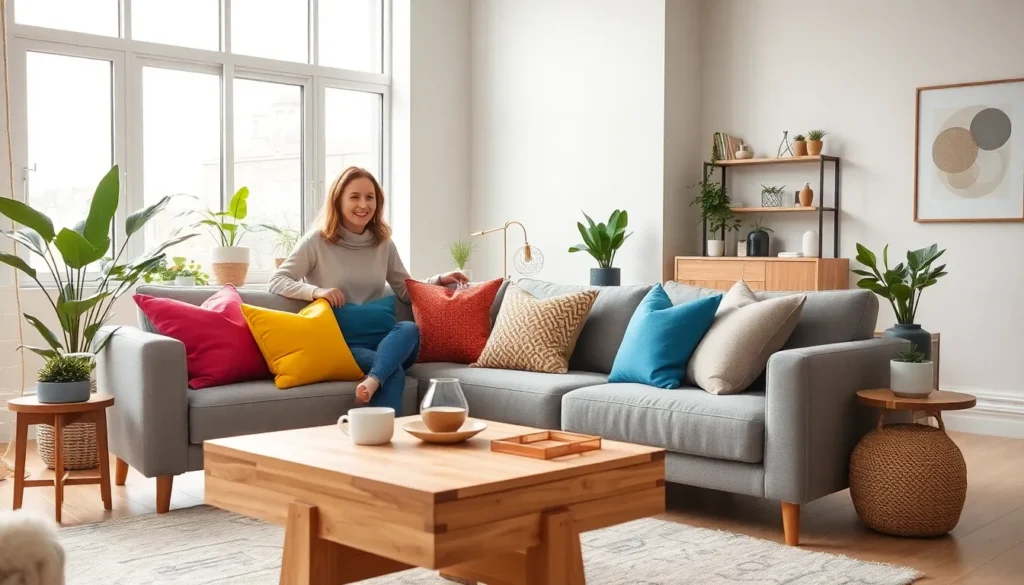Engineering design concepts are the unsung heroes behind every gadget that makes life easier. From the simplest paperclip to complex spacecraft, these concepts transform wild ideas into tangible realities. They’re like the secret sauce in a recipe, making everything work just right—minus the calories, of course.
Table of Contents
ToggleOverview of Engineering Design Concepts
Engineering design concepts transform innovative ideas into functional products. These concepts encompass multiple stages, including research, ideation, prototyping, and testing. Each phase plays a crucial role in ensuring practical applications of design in everyday items and advanced technologies.
The design process involves collaboration among engineers, designers, and stakeholders. They gather requirements and define project goals to align expectations. Clarity in communication enhances the overall design quality.
Prototyping serves as a pivotal step in the engineering design process. Engineers create models to test functionality and usability before mass production. These prototypes allow engineers to identify flaws early, saving time and resources.
Testing follows prototyping and helps validate design efficacy. Engineers conduct various tests to evaluate performance, safety, and durability. This data-driven approach ensures that products meet industry standards and user needs.
User-centered design is integral to modern engineering concepts. Prioritizing user experience leads to more accessible and intuitive products. Engineers consider feedback during the design process to refine and improve solutions continually.
Sustainability has emerged as a key focus in contemporary engineering projects. Implementing eco-friendly materials and processes minimizes environmental impact while enhancing product lifecycle. This shift reflects a growing commitment to responsible design practices.
Innovation thrives within an atmosphere of experimentation and iteration. Engineers continuously explore new technologies and techniques to solve complex challenges. By embracing change, they push boundaries and create products that meet evolving demands.
Understanding engineering design concepts is vital for developing effective solutions in today’s dynamic landscape. These principles guide engineers in realizing their vision and ensuring successful implementation across various fields.
Key Principles in Engineering Design

Key principles guide the engineering design process, focusing on optimizing functionality and enhancing aesthetics. These principles play a critical role in transforming raw ideas into effective, user-friendly products.
Functionality and Usability
Functionality drives the effectiveness of a design. Engineers prioritize features that address user needs, ensuring products accomplish their intended purpose. Usability complements functionality, focusing on ease of use. Intuitive interfaces allow users to interact seamlessly with products, increasing satisfaction and overall performance. Testing with real users uncovers potential issues, leading to improved designs that fulfill end-user expectations. These elements combine to create a product that not only works well but also enhances the user experience.
Aesthetics
Aesthetics significantly impact user perception and product appeal. Attractive designs capture attention and encourage user engagement, contributing to a product’s success in the market. Engineers consider color, shape, and material to create visually appealing solutions. Feedback from designers is crucial in refining aesthetic elements, balancing visual appeal with functional requirements. Incorporating user preferences during the design process fosters a deeper connection between users and products, underscoring the importance of aesthetics in engineering design.
The Engineering Design Process
The engineering design process involves systematic steps that guide engineers from concept to implementation.
Defining the Problem
Identifying the problem is essential for effective solutions. Engineers collaborate with stakeholders to understand needs and constraints. Problem statements often clarify project goals and establish criteria. Gathering data through research informs the design direction. Questions arise, guiding engineers to explore possibilities and refine goals.
Developing Solutions
Generating ideas occurs through brainstorming sessions. Engineers utilize creativity and logic to create multiple solutions. Evaluating each potential solution involves assessing feasibility, cost, and innovation. Prioritizing designs helps narrow choices to the most promising options. Collaboration often leads to the merging of ideas, strengthening overall concepts.
Prototyping and Testing
Prototyping allows engineers to create tangible representations of designs. Initial models focus on core functionality and usability. Testing prototypes rigorously evaluates performance and identifies areas for improvement. Feedback from tests informs design modifications and optimizes user experience. Iteration ensures that each version better meets specifications and user needs.
Implementation and Evaluation
Executing the final design involves thorough planning and resource allocation. Once a product reaches the production stage, engineers monitor its performance. Evaluations assess whether the design meets initial goals and user expectations. Post-implementation reviews highlight successes and areas needing improvement. Continuous assessment contributes to future innovations and refinements, promoting sustained effectiveness.
Common Engineering Design Concepts
Design concepts serve as foundational elements in engineering, influencing how products are developed for optimal functionality and user satisfaction. This section delves into key concepts that guide effective engineering design.
Design for Manufacturability
Design for manufacturability emphasizes creating products that are easy and cost-effective to manufacture. Engineers focus on simplifying assembly processes, selecting materials that minimize waste, and considering production constraints. Evaluating manufacturing methods early helps in identifying potential challenges, ultimately streamlining production. This approach ensures that designs are not only innovative but also practical for mass production.
Sustainable Design
Sustainable design prioritizes environmental impact by integrating eco-friendly materials and energy-efficient processes. Engineers evaluate a product’s lifecycle, aiming to reduce carbon footprints and waste generation. This method encourages the use of recyclable or biodegradable substances, contributing to sustainability objectives. By incorporating energy-efficient technologies, such as solar power or efficient insulation, designers create products that align with environmental goals.
User-Centered Design
User-centered design places the user’s needs at the forefront of the design process. Engineers gather feedback through user testing, ensuring that products are intuitive and accessible. Prioritizing usability leads to designs that enhance overall user experience and satisfaction. Iterative design processes allow for continuous improvements, aligning final products closely with user preferences and real-world applications, enhancing the overall effectiveness and appeal of the product.
Engineering design concepts are fundamental to transforming ideas into functional products. By following a structured design process that emphasizes collaboration and user feedback, engineers can create solutions that not only meet user needs but also align with sustainability goals. Prototyping and testing play crucial roles in refining designs, ensuring that products are both effective and appealing. As the engineering landscape evolves, embracing these principles will be essential for driving innovation and creating products that resonate with users while minimizing environmental impact. Understanding and applying these concepts will empower engineers to navigate the complexities of design and deliver successful outcomes across various industries.









